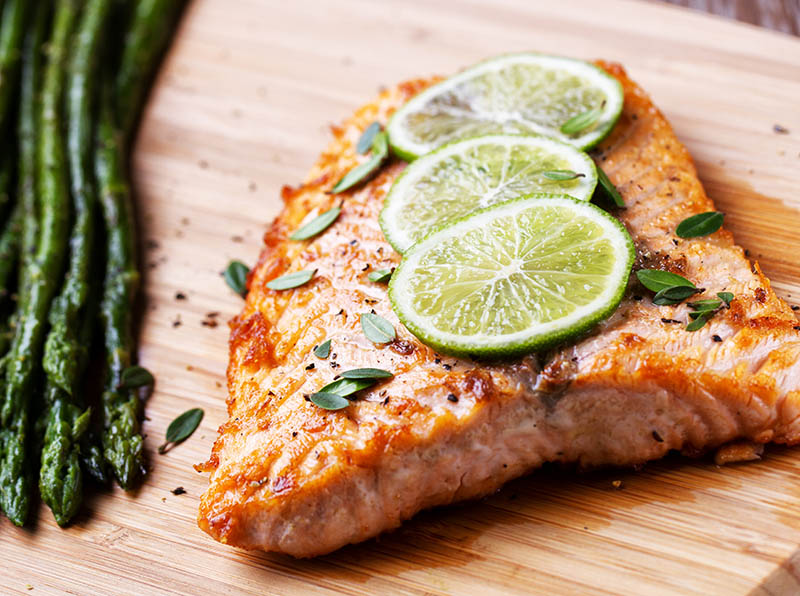If you’ve browsed the aisles of any grocery store or picked up a health magazine, you know that protein is currently a trend. From bars to powders, protein-laden products are everywhere. But it’s important to consider how the nutrient fits best into your individual diet.
For everyone, protein is a basic need. It is key to providing building blocks for bones, muscles, cartilage, skin and blood, as well as for hormones, enzymes and vitamins, according to registered dietitian Mary Aukes, who works with cardiology clinic patients for Sanford Health. It also helps maintain or increase metabolism.
Protein helps stave off hunger longer than other foods, she said, because animal-source and some plant-based protein and accompanying fat content digest slower.
How much protein is best?
The right quantity varies with each person, Aukes said.
“The amount of protein for an individual is specific to gender, age, height, activity level and possible medical indications. It is not a one size fits all,” she said.
Also, she added, protein itself can vary, depending on whether it comes from animals or plants.
“Different types of protein have different bioavailability to an individual as well as provide different amounts and types of vitamins and minerals and fat content. Plant-based proteins will also help to provide fiber,” she said.
Some medical issues may require more protein; others may require limiting it, Aukes said.
The National Academy of Medicine sets acceptable protein intakes from 10% to 35% of total daily calories.
The FDA recommends a daily value for 50 grams of protein per day based on a 2,000-calorie daily diet and may vary higher or lower depending on calorie needs.
Watch for excess
While protein offers a host of health benefits, too much may not be a good thing. Because we often choose fatty animal types (fried chicken wings or pork ribs, anyone?), it can even lead to weight gain and other health problems such as diabetes and cancer.
If you’re not sure how much you’re consuming, you can read the nutrition facts label on the foods you eat to help you meet your daily protein needs. For example:
- One small (3-ounce) hamburger has 21 grams of protein.
- A cup of cooked beans such as pinto, black beans, or lentils has around 16 grams of protein.
- A handful of almonds (one-fourth of a cup) has around seven grams of protein.
Quality over quantity
Instead of trying to work more protein into your diet, focus on improving the quality of your protein. Boost your intake of fish. Don’t forget to incorporate plant-based proteins. And when choosing meat, skip the processed stuff and opt for fresh, leaner cuts.
Quality protein sources include:
- Cold-water fatty fish, such as salmon, tuna, herring and sardines, which are high in omega-3’s
- White fish such as cod, tilapia, halibut and haddock
- Lean meats (90% lean or higher)
- Beef loin
- Chicken or other poultry – white meat
- Pork loin
- Low fat or fat-free dairy
- Milk
- Yogurt – Greek has more protein than others
- Cottage cheese
- Eggs
- Beans and lentils
- Soy
- Nuts and seeds
- Walnuts, pecans, almonds
- Sunflower seeds
- Pumpkin seeds
- Flaxseed
- Chia seeds
“In the heart world, we would recommend to include a variety of proteins with emphasis on lean meats, low-fat dairy and plant-based proteins, with a goal to balance your plate with other sources of foods from fruits, vegetables and whole grains, along with portion control based on individual needs,” Aukes said.
“For the general population, these recommendations would also be true. Try to focus on a well-rounded diet of a variety of foods and adding color to every meal and every snack.”
Learn more
- A healthy diet: Your first line of defense against disease
- Plant-based eating without missing key nutrients
- Tips for keeping your cookouts and picnics safe
…
Posted In Healthy Living, Heart, Nutrition, Specialty Care, Weight Loss
